Sick of WFH? Try WFN (work from nature)
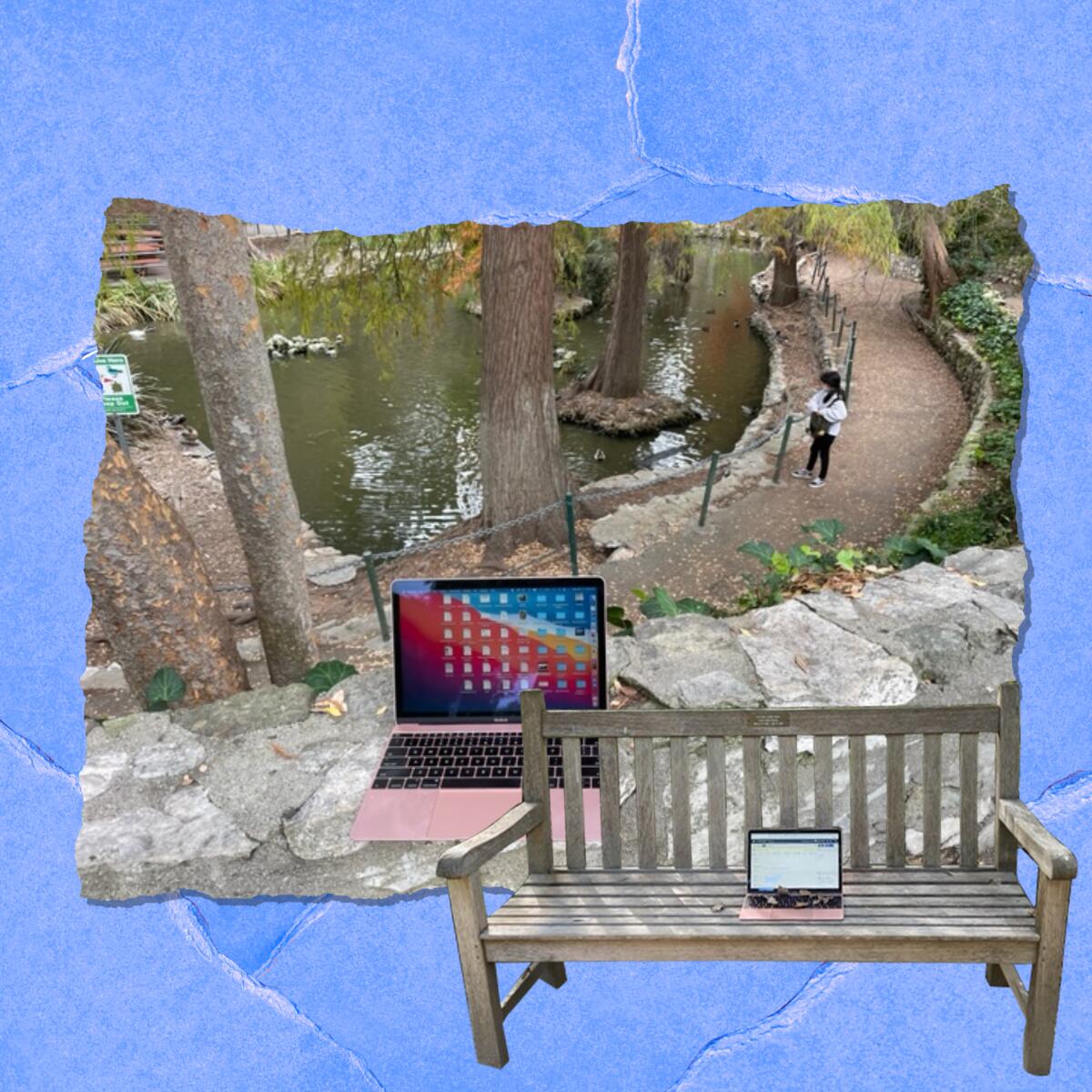
If you’re not back in the office yet because of the pandemic, try WFN, or “working from nature.”
Last week, AirTalk’s Larry Mantle hosted a radio segment dedicated to Southern Californians who went to theme parks, Griffith Park and other out-of-the-house locations to work. I couldn’t love this idea more. Truth be told, I’ve been doing this pretty much since the pandemic started. One time, I was writing away at a park bench when a gust of wind showered oak leaves on my keyboard. It was as if nature was demanding my attention. I happily obliged, picking up the curled leaves and examining their shapes and texture.
Now I’m formally giving a shout-out to WFN as an alternative to the humdrum of staying inside. To start, try this: Go to your local park and work for as long as your laptop lasts without being plugged in (mine lasts around four hours). If you have Zoom meetings, find a quiet spot with a nice backdrop. I’ve done this, and people seem to appreciate my nonfake backdrops. Use a hot spot on your phone, or try visitor Wi-Fi, though you may want to sign in via VPN for security reasons. (Here’s where to find Wi-Fi spots at six L.A. parks.)
After you’ve mastered your local park, go farther, maybe a hike to Amir’s Garden or Dante’s View in Griffith Park. Or maybe visit a park you’ve never been to, one you can explore on your lunch break. (El Dorado Nature Center in Long Beach is a gem, with lots of quiet benches; parking is $6 to $9.) Maybe bring binoculars along to check out the local birds. The idea is to get your work done outside of the mind-numbing walls you’ve been staring at. And, no, working while sitting outside a Starbucks doesn’t count (unless it’s the one in Rancho Palos Verdes with spectacular views of the Pacific).
Who knows? WFN could become a healthy habit — and reawaken a bond with nature you didn’t know you were missing. It’s up to you whether you tell the boss where you are. If you try it, let me know how it goes.
3 things to do this week
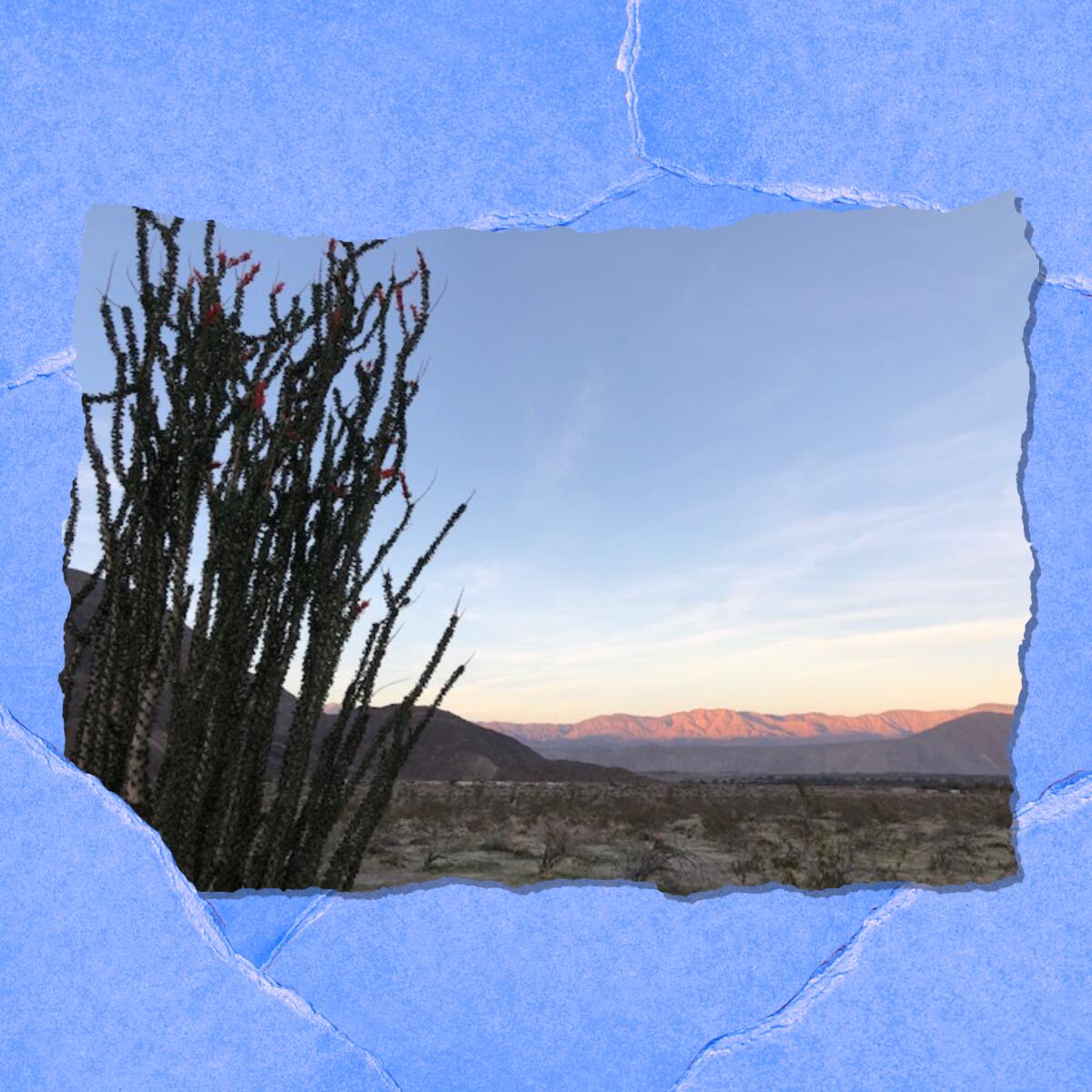
1. Register for a guided hike in the Anza-Borrego Desert. Cooler temperatures in winter and spring make a trip to the desert a must. The Anza-Borrego Foundation organizes guided hikes in winter and spring that take you deep in and around the state park about 146 miles southeast of downtown L.A. Two strenuous, scenic hikes are coming up: 7.5 miles to Travelers Peak in the eastern Santa Rosa Mountains, for views of the Borrego Badlands, on Jan. 29, and five miles to Whale Peak in Anza-Borrego Desert State Park on Feb. 26. Groups are limited to 20 people; $30 for foundation members, $45 for nonmembers. Price is per person, per hike.
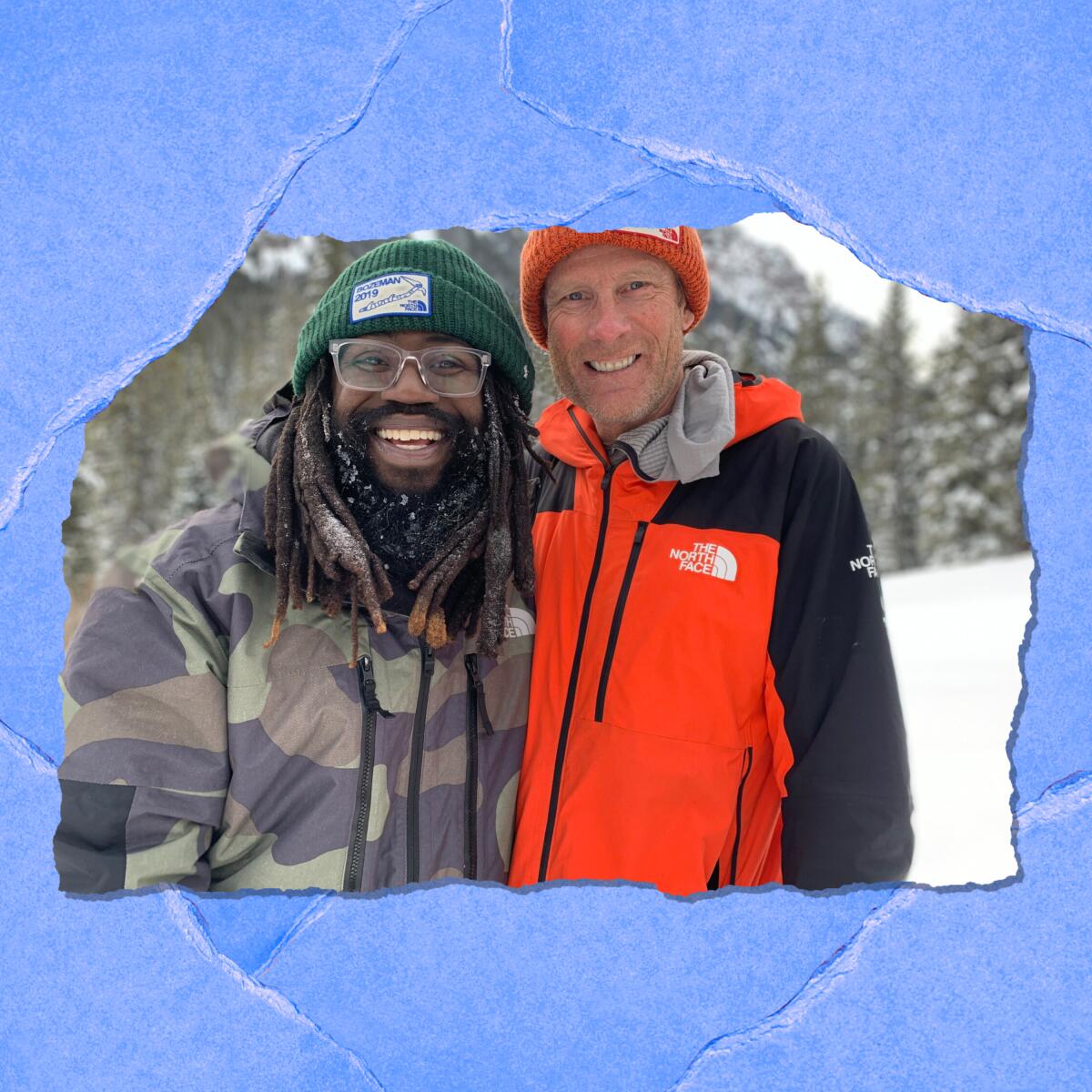
2. Sign up for an evening of adventure storytelling. I love hearing tales from adventurers who push the envelope. Mark your February calendar for these two Winter Speaker Series events sponsored by Alpenglow Sports that you can attend in person or online for free. Pro skier Hilaree Nelson will talk about skiing the Ellsworth Mountains in the interior of Antarctica in 2020. Nelson set a record in 2018 when she was the first woman to climb two peaks higher than 26,000 feet — Mt. Everest and Lhotse, in the Himalayas — in 24 hours. Nelson will appear from 7 to 8:30 p.m. Feb. 3 at Olympic Village Lodge at Palisades Tahoe. You can see her there (limited capacity) or watch online (register here). Next up are climbing great Conrad Anker and rock climber Malik Martin, who collaborated on the documentary “Black Ice,” about wannabe climbers who take on winter feats in Montana. The duo come from Memphis Rox, a climbing gym in Tennessee that favors a “pay what you can” approach as a way to make the sport more inclusive and diverse. Anker and Martin will speak from 7 to 8:30 p.m. Feb. 17 at Olympic Village Lodge. See them there (limited capacity), or go online to watch (register here). Also, everyone who registers receives one entry to a gear giveaway; you can make a donation for more chances to win. All proceeds go to charity.

3. Which California native plant best suits your zodiac sign? We figured it out. Forget the stars in the sky and focus on native-plant stars when thinking about your astrological future in 2022. Me, I’m a Taurus, which means dependable and reliable ceanothus, specifically Ceanothus gloriosus, or Anchor Bay, best reflects what I’m about (yep, that fits). The California poppy goes to moody Scorpios. Check out the full guide to native plants that match your zodiac sign — and don’t forget to plant some in your garden.
Trashed

Still don’t know what composting is all about? A new California law that goes into effect this year makes composting certain types of waste a must. Lily Polstein of Sustainable Landscapes L.A. and illustrator Gabrielle De Fontanes break down the process, from tumblers to worm bins, in a step-by-step illustrated guide that begins with an explanation: “Composting is the process of collecting food scraps and yard waste and turning them into organic decomposed matter called ‘humus.’” It outlines everything you need to know. We can do this, L.A. Check out “A kitchen composting guide for beginners.”
Wild things
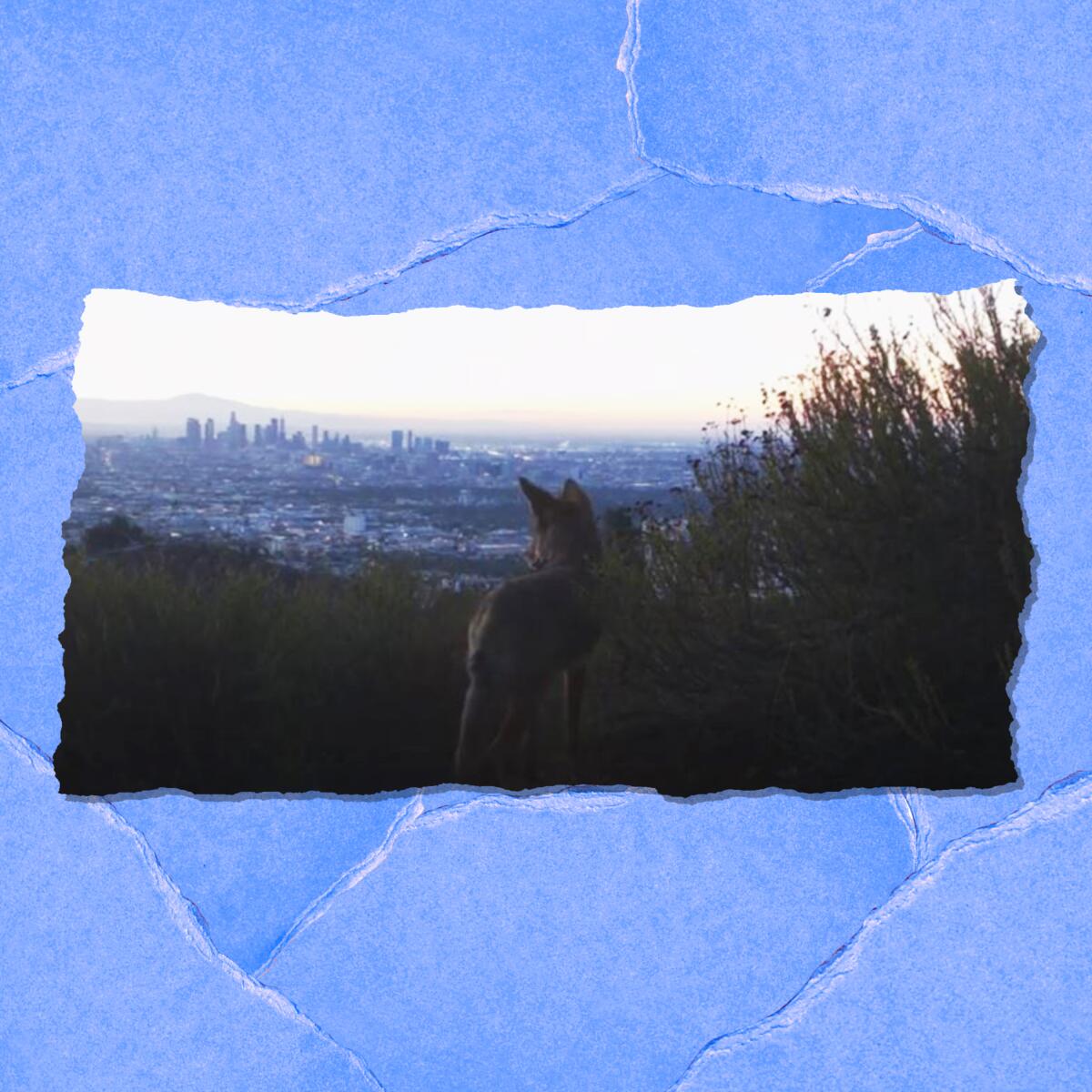
Candid cameras in the wild can tell us so much about our habitat. L.A. is no exception. CLAW, or Citizens for Los Angeles Wildlife, released a 2021 highlight reel of footage from webcams posted in natural spaces in the eastern Santa Monica Mountains, roughly between the 405 Freeway and Griffith Park. The season-by-season wildlife sightings are amazing, many showing bobcats and coyotes with the skyline of downtown L.A. in the background. But the area is fragmented in terms of creating a functioning corridor for wildlife to roam, something the organization has been working on. “CLAW sponsored the original L.A. City Wildlife Corridor Motion in 2014 ... which has taken eight years to become a draft wildlife ordinance,” co-founder and CEO Tony Tucci wrote in an email. “Our organization fulfills our mission with a focus on three tenets: conservation, education and advocacy. Our Nature Cam Program fulfills all three.” You can view more L.A. wildlife videos and learn about wildlife corridors at the CLAW website.
The must-read
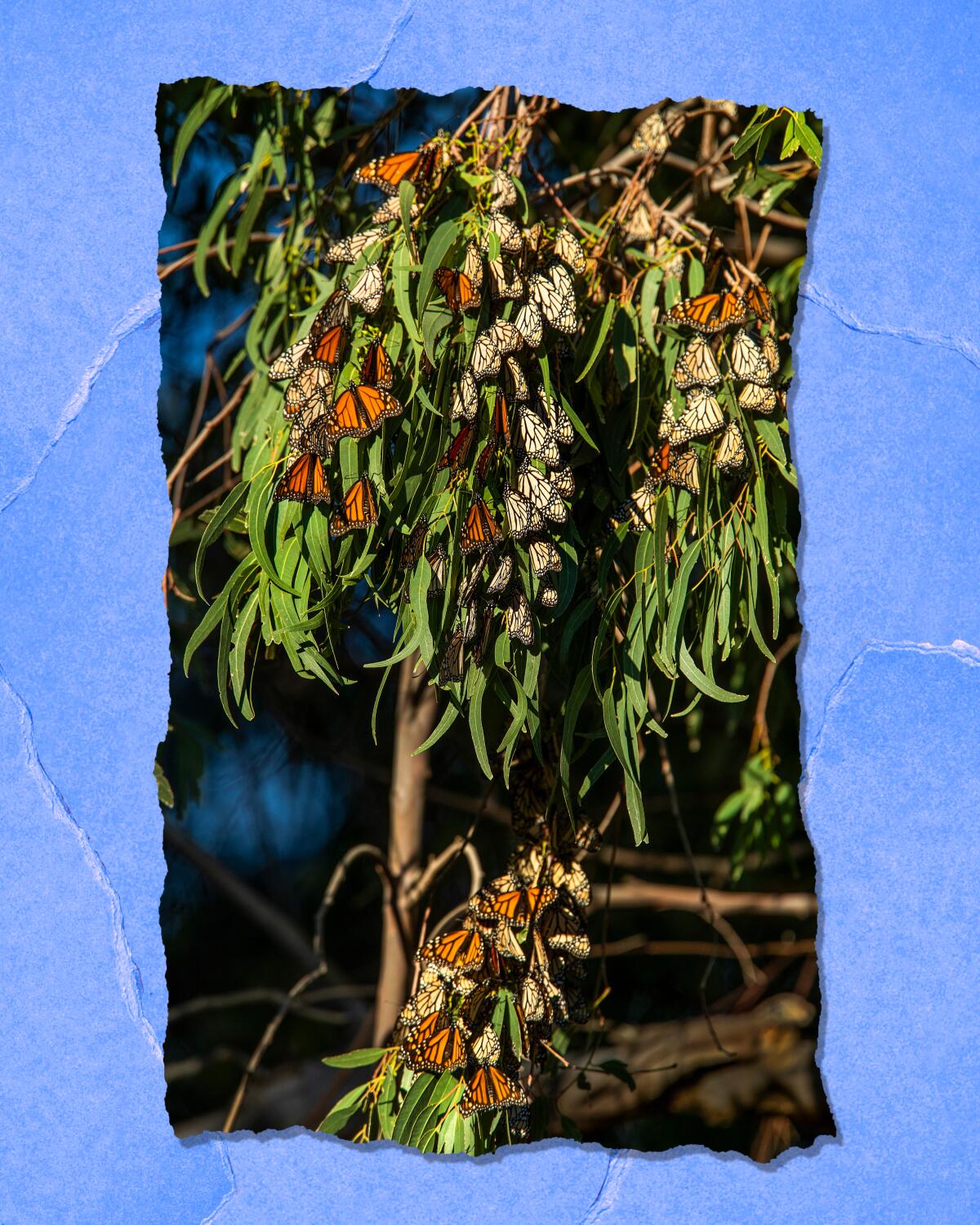
I wrote about the apparent rebound of migrating Western monarch butterflies in California in October. The good news: The rebound is for real. Times writer Jeanette Marantos reports that, after a dismal 2020-21 season, monarchs are back in a zone that stretches from northern Baja, Mexico, to Central California. Richard Rachman, who spends his free time counting monarchs in the L.A. area, found about 725 near a gated community in Zuma Canyon on a recent early morning. “I tell people to look for little Doritos,” he told The Times. That’s what the monarchs look like when they are resting in eucalyptus trees. Last season’s coastal travelers numbered just 1,914; this year, more than 200,000 have been sighted at overwintering sites. Read the full story about counting monarch butterflies in L.A. — and how you can help.
The red flag
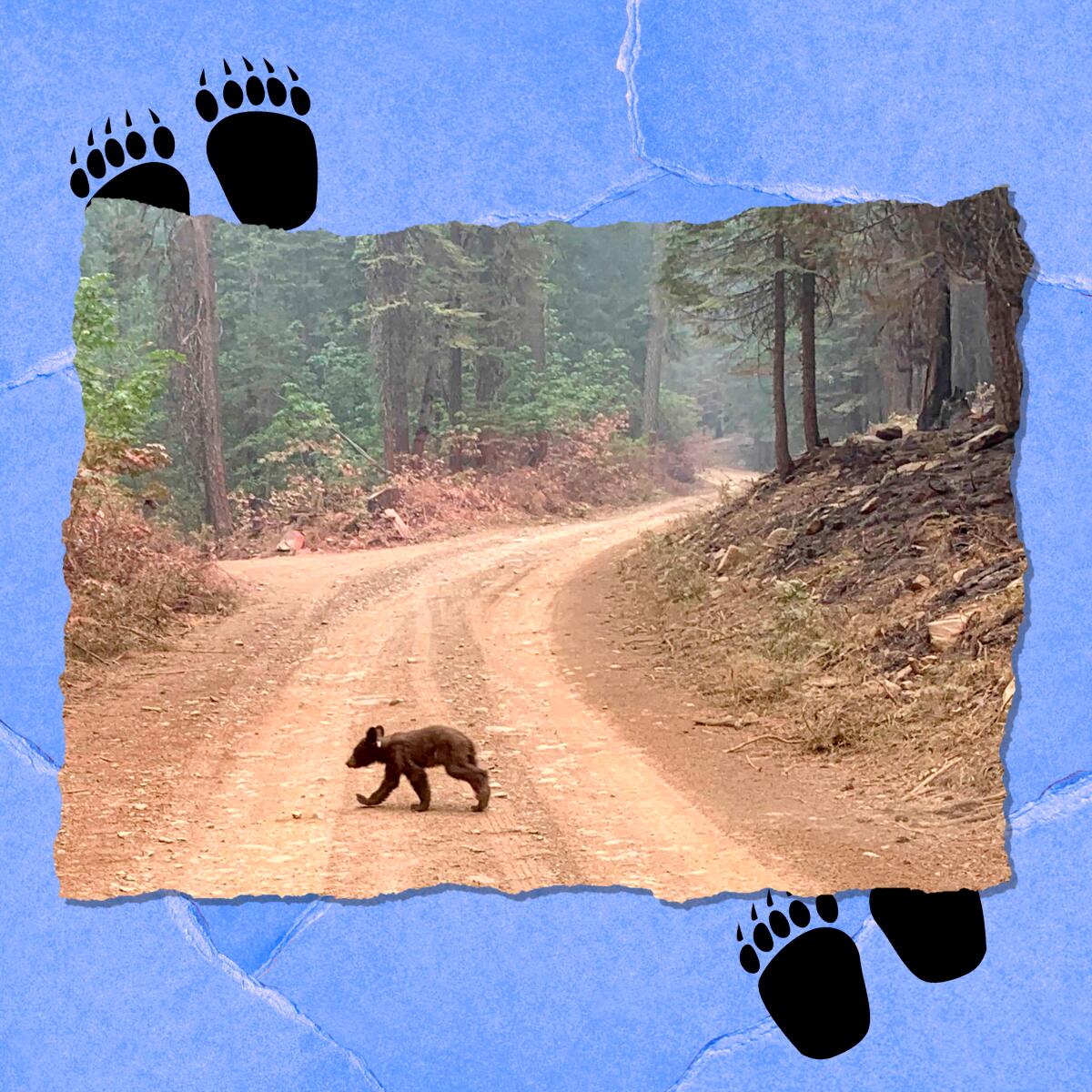
Another possible consequence of wildfires: black bears getting hit by cars. Times writer Louis Sahagún reports: “The unprecedented surge in deadly vehicle strikes is likely the result of bears fleeing massive wildfires in the Sierra Nevada, as well as the effects of drought, according to biologists.” It’s not known exactly how many bears have died on roadways. Some numbers, however, do exist. Thirteen bears were killed last year along a stretch of U.S. 395 in the Eastern Sierra; in 2019, that figure was four. Read more about how mother bears and cubs battle for survival as wildfire, drought and traffic take a heavy toll.
P.S.
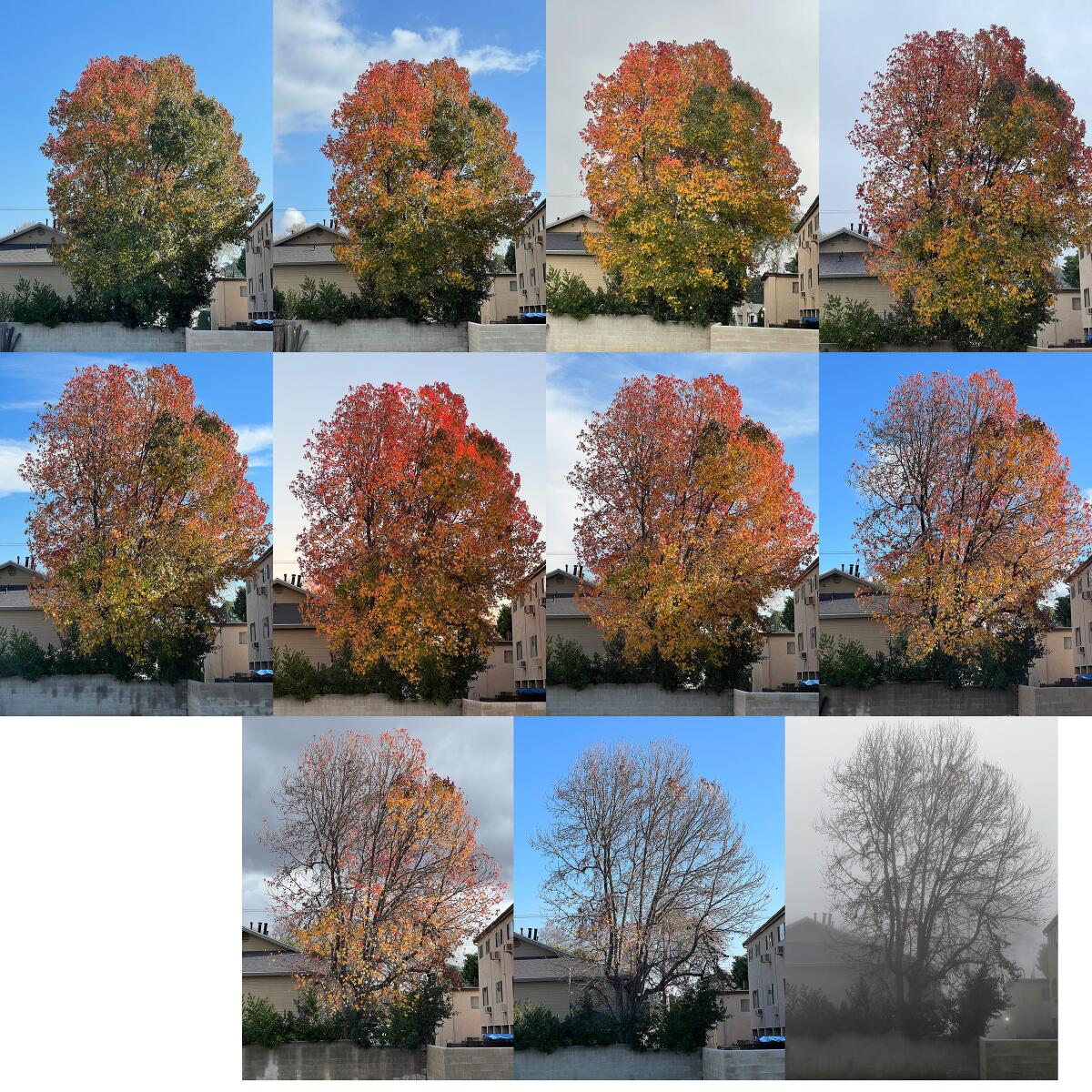
You are looking at a maple tree and a little bit of time traveling. Raul Roa, photo editor for Times Community News (a division of the L.A. Times), snapped photos of this tree on his Whittier street between Dec. 1 and Jan. 7. He took a picture with his iPhone (set at 3x) from around the same spot every other day. The time of day varied. Then he selected the ones he liked best and put them together in a chronological collage. “This was a project I’ve been eyeing for a few years but always forgot about ... until this winter,” he wrote in an email. I love how each photo plays a role in telling the seasonal story that plays out on a single SoCal street. Thanks, Raul, for helping us pay attention.
Send us your thoughts
Share anything that’s on your mind. The Wild is written for you and delivered to your inbox for free. Drop us a line at [email protected].
Click to view the web version of this newsletter and share it with others, and sign up to have it sent weekly to your inbox. I’m Mary Forgione, and I write The Wild. I’ve been exploring trails and open spaces in Southern California for four decades.

Sign up for The Wild
We’ll help you find the best places to hike, bike and run, as well as the perfect silent spots for meditation and yoga.
You may occasionally receive promotional content from the Los Angeles Times.




